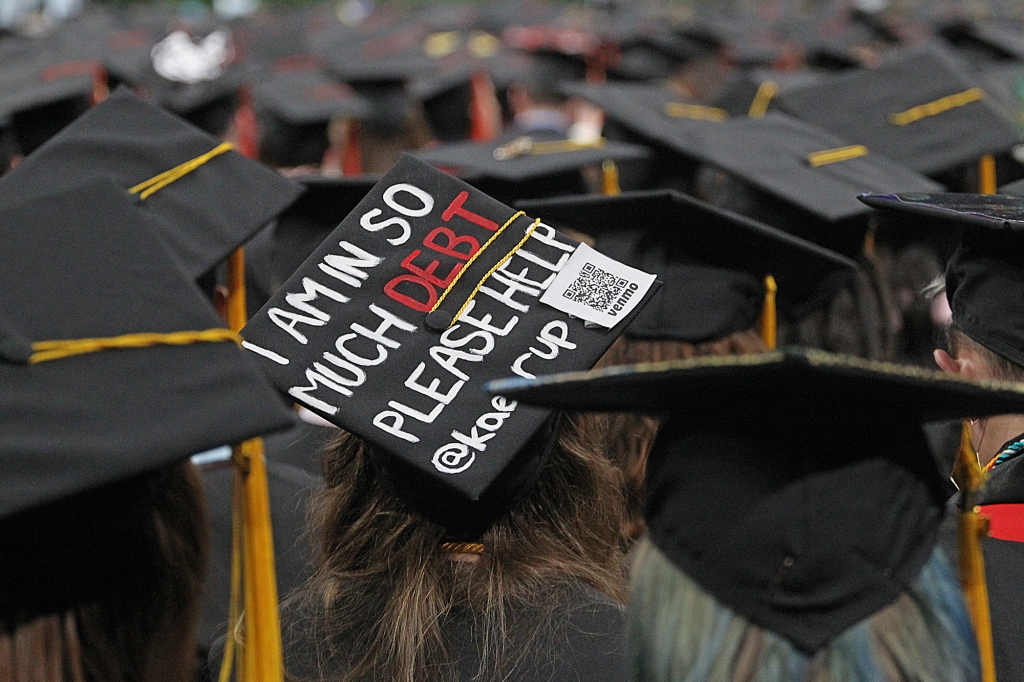Why technology is the solution to the student-debt dilemma
No sooner had the White House announced its latest student loan debt forgiveness initiative late last month than critics and supporters began to weigh in. Some argued that saddling Americans with a whopping $1.7 trillion in student debt has made it impossible for many to buy homes, start families and help the economy grow. Others retorted that a loan’s a loan, and that the government shouldn’t be in the business of bailing out adults who made commitments they understood fully well. There is no doubt student debtors need help: Nearly one in three current students already think they will never pay off their loans, and unlike other types of debt, student loans cannot be forgiven by bankruptcy, which means they’ll likely last forever.
While there may be a place for some form of debt relief, it’s not a long-term solution. If you really want to fix student debt you have to fix college. How? By lowering costs, offering more coursework the job market actually needs and drastically improving outcomes. Students need to earn degrees faster and personalize learning to meet both their academic and professional goals. Traditional one-size-fits-all curricula are no longer relevant in this economy — and the employability numbers bear that out.
Two statistics illustrate the state of our current higher education sector. According to the National Center for Education, the cost of attending college increased by a whopping 169% between 1980 and 2020, while earnings of Americans aged 22 to 27 rose by a far more modest 19%. For most Americans, that meant taking on debt— and often graduating without the skills required to pay it back. Which brings us to the second stat: last year, in a survey of recent graduates of two- and four-year colleges, 21 percent said their colleges didn’t provide them with the right job skills, and 38 percent said they occasionally or rarely used the skills they learned. Half didn’t apply to entry-level jobs because they felt underqualified.
Put simply, colleges are charging far more than the employment outcomes they’re likely to produce. And this isn’t even accounting for the 38 percent of college students who won’t graduate, often stuck with debt but no degree. Education used to be the great equalizer; for it to be once again, we need to demand that colleges demonstrate a clear return on the investment.

To do this we must embrace technology — to not just bring down college costs, but to ensure that what we teach results in actual job market success. There is a model for this. During the global COVID-19 pandemic, colleges around the world developed online or hybrid academic experiences that delivered, at the very least, basic educational necessities while ensuring their students stayed connected and informed. As more than a decade’s worth of data confirms, digital learning works because it allows greater access to academic resources at far lower costs, and with increased personalization.
Today, a majority of students – who on average are aged 25 or older, already employed, typically female and often parents – have to trade off between learning and earning. Online and hybrid models offer the flexibility many students need to juggle education, work, and family life. A recent survey conducted by the American Psychological Association confirms this; most respondents said they valued not only the flexibility of digital learning, but also its diverse range of resources and learning method.


But if the ‘how’ is one question, the ‘what’ is another — and that ‘what’ is more real-world skills. Surveys overwhelmingly suggest that the number one reason students go to college is to get a good job. College degrees would be far more meaningful if grads could compete in an economy that’s increasingly global and highly digital. This doesn’t mean every college should become a coding boot camp. Rather, they need to reinforce digital-first training such as remote collaboration, multi-source research and real-time project evaluation.
More and more, we see that employers are valuing college degrees less and less. We need to change that by allowing young Americans to personalize education to gain the skills that will forge actual careers. Otherwise, we’re simply dooming them to high college costs for an education many students might not actually use and cannot repay.
The richest, greatest country in the world needs more than just debt forgiveness; it needs a new deal for students to ensure we can continue to compete.
Dan Rosensweig is CEO of educational technology company Chegg








Gloss